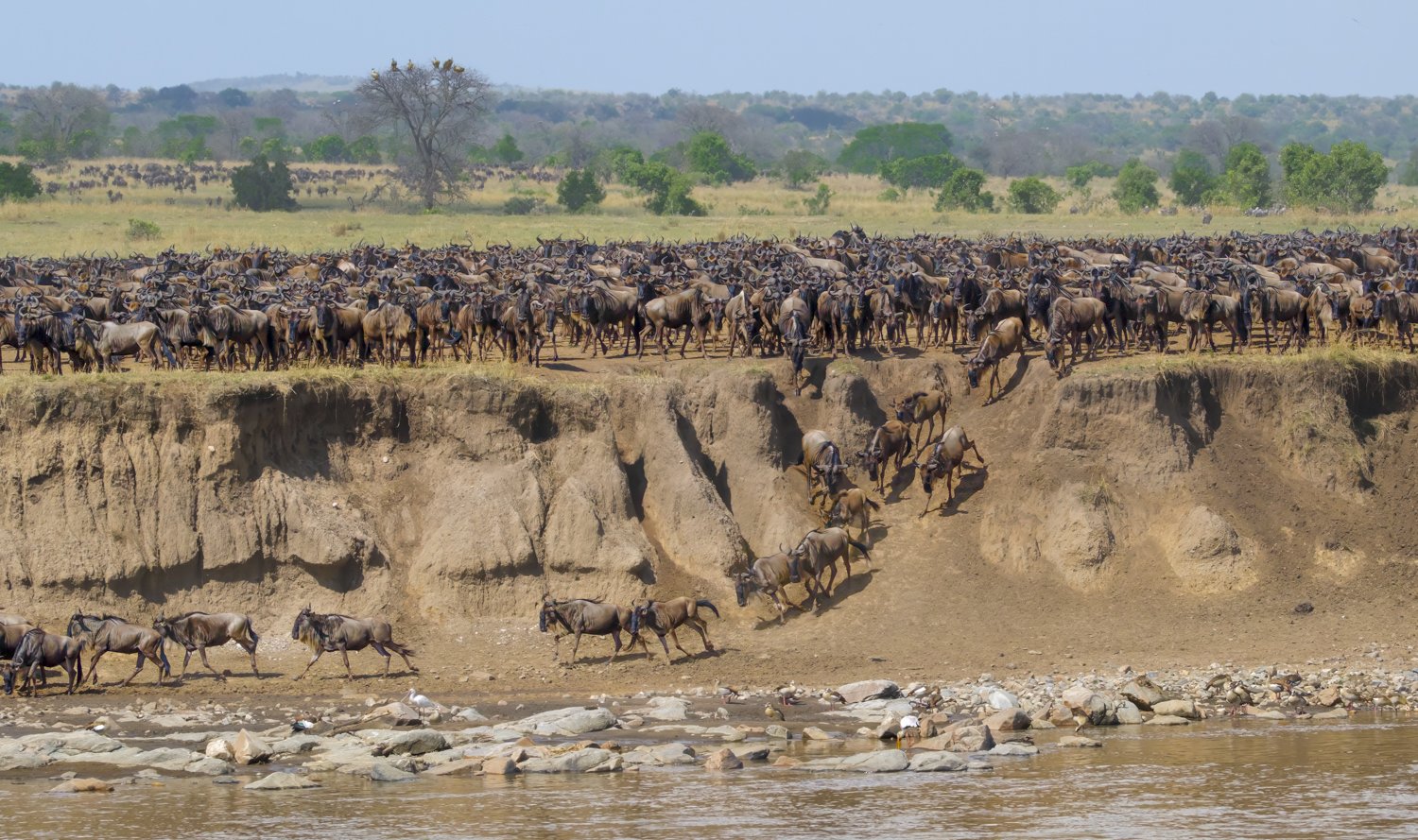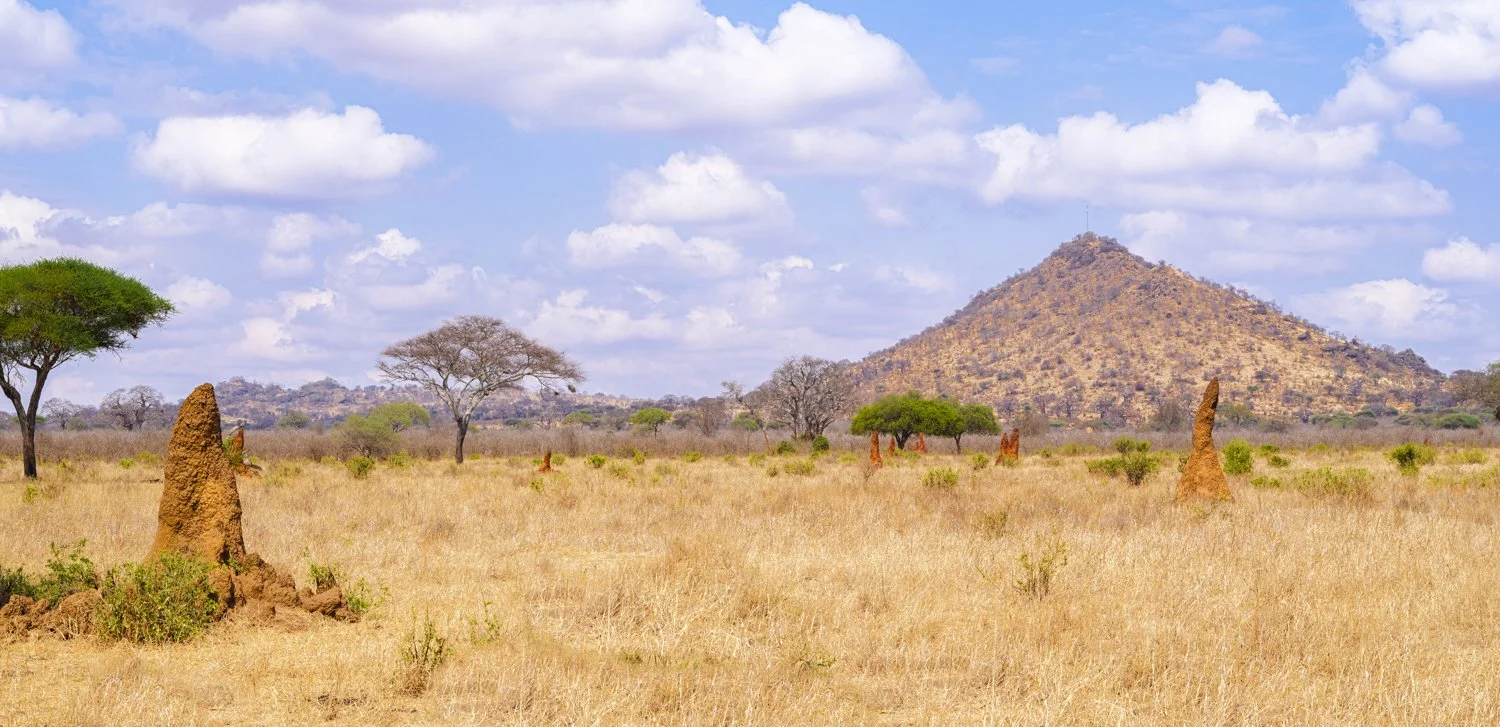Tanzania
2023
-
For those who enjoy photographing wild animals, it is hard to do better than taking a safari, and our 11-day trip through Northern Tanzania filled the bill. The photos in this gallery were taken in Serengeti National Park, Maasai Mara Game Reserve, Ngorongoro Conservation Area, Lake Manyara National Park, and Tarangire National Park. Some photos were taken while on foot – both in and out of camps and at times with an armed guard – while many more were taken from the safety of a rugged, now out of production, “old school” British-built Land Rover. Ours had a custom roof easily elevated for viewing and photography.
It is challenging to succinctly describe the diverse subjects in this gallery. They include indigenous people (Maasai), selections from probably over 100 species of birds and other animals including cheetahs and leopards, mass migrations of wildebeest, as well as views of landscapes and animals from a hot air balloon silently moving at 15-20 miles per hour just over 100 feet above ground (the movement requires high shutter speeds).
Elephants are a favorite subject and there were days where we stopped counting after seeing over 100; many were within just 20- 50 yards of us. In a different vein, for almost an hour, we watched and photographed two lions that had climbed up a tree to observe possible prey and take a nap on a limb. Apparently tree-climbing lions exist only in two locations, one of which is in Tanzania.
An ostrich mating dance and what followed made for unusual shots. We saw and photographed scenes showing so many other stages of life: newly born baboons, elephant calves, infant wildebeests and young giraffes clinging closely to their mothers: juvenile cheetahs carefully following and learning from their mother as she stalked an antelope; “teenage” male elephants playfully jousting with each other while perhaps learning how to fight for real later in life; mature antelopes of various types running for their lives as lions stalked them; 20 foot and longer Nile crocodiles lying in the Mara River downstream of where wildebeest and zebra were crossing, waiting with open jaws so that they could snare and eat an errant or injured one; a mature wildebeest whose life expectancy had just been dramatically shortened because it just broke a hind leg while crossing the Mara River (although the herd surrounded it protectively, it was having trouble keeping pace and in any event was still highly vulnerable to attack by hyaenas or lions); an old bull elephant that was likely exposed to mortal threats due to its age and living solo; a bloody wildebeest that moments before had been killed and partially eaten by a lion lying on the ground next to it; carcasses of an elephant, a wildebeest and of other animals being picked apart by hyaenas and vultures. Both the poignant and brutal moments of life and death were front and center.
Learning about the relationships that some species have with each other can make capturing them together in photos more meaningful. For example, why are zebras and wildebeest frequently seen together? Part of the answer is they have strengths in different senses that, when joined, help protect both of them. Wildebeest hear very well and have a great sense of smell – both of which are especially helpful at night – but they do not have great vision. Zebras, on the other hand, have excellent eyesight which is particularly helpful during the day. Further, they are compatible grazers as zebras prefer to eat long grasses while wildebeest favor the shorter varieties. Thus, they can easily share the same grazing grounds and while doing so protect each other.
The Ngorongoro Crater presents, from a photographer’s perspective, special opportunities in re both landscapes and animal life. As the largest unbroken caldera in the world, it has its own ecosystem. Photos show that the morning clouds around the top of the 2,000-foot-high wall that makes up the perimeter can be dramatic. And, the Crater has as potential subjects 500 bird species and 300 other animal species as well as the world’s highest density of lions. The Crater and its animals are strongly protected and free from development. By the way, the night sky there is exceptionally dark, and thus the stars appear especially bright. (Photo taken without a tripod.)
Other nature pictures are of Baobab trees, sometimes called the “upside down” tree or “tree of life”, which have massive trunks (33-46 feet in diameter) and can live for 1,000 years. Sausage trees with their hanging flowers, acacia trees (aka, thorn trees), and massive strangler fig trees were also picturesque.
A brief visit to Gibb’s Farm, a former coffee plantation that now has a comfortable boutique hotel and famous restaurant, was our only brush with western bricks and mortar lodging while out in the wild. (We stayed in tents with comfortable beds but no running water nor electricity beyond enough to power lightbulbs for a few hours.) Gibb’s was fun to photograph and we enjoyed learning about its remaining coffee production activities as well as its beautiful flower and produce gardens.
As a technical aside, the shots of distant animals, for example of the leopard hiding amongst bushes, were taken with a 150-600mm lens on an APSC format camera, making it a 229-914mm full frame equivalent focal length range lens. In contrast, other shots, such as those of the jousting elephants, were taken from such a short distance that I could use my medium format camera with a 35-70mm lens (28-55mm full frame equivalent focal length range). The medium format camera, which captures exceptional details, was also used for many of the landscapes.









































































































































































































